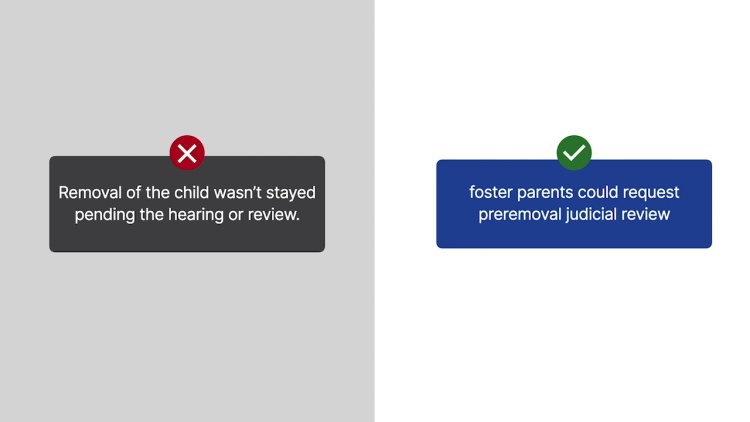Smith v. Organization of Foster Families for Equality and Reform
United States Supreme Court
431 U.S. 816 (1977)

- Written by Denise McGimsey, JD
Facts
The express policy of the state of New York (defendant) promotes children living with their natural parents. If parents cannot adequately care for their children, they may voluntarily transfer custody to a social services agency that then places the children in a foster home. Natural parents have the right to regain custody of their children on a predetermined date or within 20 days’ notice. They continue to have rights and obligations toward their children even after the children are placed in foster homes. Foster placements are designed to be temporary, pending return of children to their natural parents or permanent adoption. Foster parents have a contract with the agency and are paid to provide day-to-day care and supervision. They do not have full legal custodial rights. Under New York law, the agency has discretion to remove children from a foster home. At least 10 days’ advance notice is required, and the foster parents may seek a preremoval conference to object. Removal is stayed if a conference is scheduled. If a child is removed after a conference, the foster parents may appeal by means of an adversarial hearing subject to judicial review. Removal is not stayed pending appeal. If a child has been placed with a foster family for 18 months or more, the foster parents may seek preremoval judicial review of the removal. New York City (defendant) provides alternative preremoval procedures that afford greater protections to foster parents. Instead of a preremoval conference, the city allows parents to seek an independent review that is more comprehensive. The Organization of Foster Families for Equality and Reform (OFFER) (plaintiff) and individual foster parents whose foster children had been removed (plaintiffs) filed suit against the state of New York and New York City, alleging that the removal procedures violated due process and equal protection. Natural parents of children placed in foster care sought, and received, leave to intervene in the case. The District Court decided in plaintiffs’ favor. Defendants appealed.
Rule of Law
Issue
Holding and Reasoning (Brennan, J.)
Concurrence (Stewart, J.)
What to do next…
Here's why 899,000 law students have relied on our case briefs:
- Written by law professors and practitioners, not other law students. 47,000 briefs, keyed to 994 casebooks. Top-notch customer support.
- The right amount of information, includes the facts, issues, rule of law, holding and reasoning, and any concurrences and dissents.
- Access in your classes, works on your mobile and tablet. Massive library of related video lessons and high quality multiple-choice questions.
- Easy to use, uniform format for every case brief. Written in plain English, not in legalese. Our briefs summarize and simplify; they don’t just repeat the court’s language.





